Depending on the story, branch of theology, or person you ask, Hindus have anywhere between 33 and 330 million Hindu gods. There are multiple Hindu sects with the four most prominent being: Shaivism (followers of Shiva as their highest god), Vaishnavism (followers of Vishnu as their highest god), Shaktism (followers of the supreme mother god – Shakti), and Smartism (the “liberal” sect that allows worship of multiple gods).
While each sect follows a different supreme Hindu god, some sects believe all gods or Hindu deities are incarnations of one supreme being, while others believe they are all incarnations of multiple supreme beings, and others still, simply a multitude of gods.
An exhaustive list of all the Hindu gods could go on for pages, so we’ve identified 10 of the most prominent although there are many others that deserve equal recognition for their place in Hindu mythology.
Table of Contents
The Hindu Trinity

Of the many Hindu gods, three stand out as forming the foundation of the Hindu religion. This group is known as the Hindu trinity and includes Brahma, Vishnu, and the god Shiva.
Brahma: The Creator
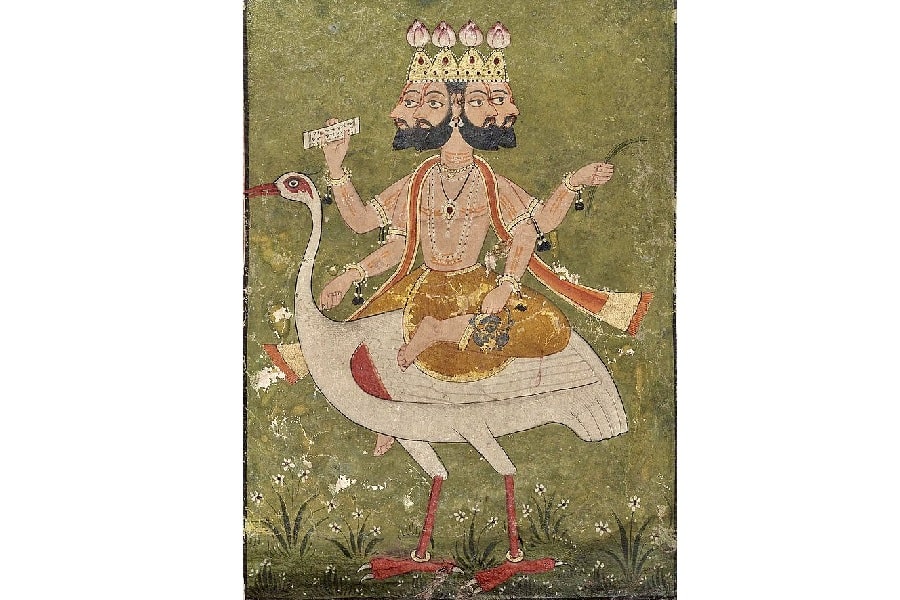
Appearance: The Hindu deity Brahma has four heads and four arms. He is usually depicted as human-like, and often with a beard.
Female Partner: Saraswati, Goddess of Education, Creativity, and Music
Sect: None
The Hindu Trinity refers to the three gods responsible for the creation, upkeep, and eventual destruction of the human world. Brahma, or Lord Brahma, is the first of these three Hindu gods, the creator.
Yet despite this, he is not as revered in modern-day Hinduism as much as Shiva and Vishnu, although he was in ancient texts such as the Bhagavad Gita. In comparison to the other two Hindu deities who have thousands of temples across India, Brahma has just two dedicated solely to him.
There are several stories that point towards why this could be. The nicer story stands that Brahma has simply done his part; he has created the universe and can now rest.
One of the less nice stories involves Saraswati becoming angry when Brahma created a second wife, and so cursed him to never be followed by humanity.
Another story still is even darker and tells of Brahma becoming obsessed with Shatarupa, his own daughter, whom he created to help him produce the universe. So taken with her beauty was Brahma that he quite literally couldn’t keep his eyes off her, sprouting heads so he could keep looking as she dodged out of his eye line in embarrassment.
Finally, so fed up with his gaze, she jumped in order to avoid it, but Brahma, in his obsession, simply sprouted a fifth head atop the others so he could continue to look at her.
Shiva, the third god of the Hindu Trinity, had had enough at this point and chopped off his fifth head admonishing him for his unholy behavior, and cursing him to not be worshiped like the other Hindu gods.
It is said that since then Brahma sits continually reciting the Vedas, one for each of his four heads.
Vishnu: The Preserver

Appearance: Portrayed as human-like, but with blue skin and four arms, each holding an item: the conch, the lotus flower, the chakra/discus, and the mace.
Female Partner: Lakshmi, Goddess of Wealth and Purity
Sect: Vaishnavism
Vishnu often referred to as Lord Vishnu, is the second of the Hindu Trinity, alongside Brahma and Shiva.
He has appeared on Earth in 9 different forms, including a fish, a boar, a powerful warrior, and Rama, the perfect man, who is worshiped as a sort of subsidiary deity to Vishnu. But it is only when there is danger and he is needed to restore the balance between good and evil that Vishnu appears. It is believed he will appear once more on Earth, in his tenth form, Kalki, a powerful avatar wielding a flaming sword atop a white horse, and that his appearance will signify the end of the world and the dawn of a new age.
More Hindus worship Vishnu as their supreme god than any other deity believing it was he who gave them immortality.
So the story goes that the gods had been weakened after falling prey to a trap laid by Sage Durvasa, who had cursed them to “be bereft of all strength, energy, and fortune.” In their absence, the Asuras (commonly known as ‘demons’) rose up for control of the universe, and desperately, the Hindu gods appealed to Vishnu for help.
He told them to churn the milky ocean to obtain the nectar of immortality which would, in turn, grant them their strength anew. But, Vishnu warned, they required the Asuras’ help, and so needed to treat them diplomatically until they could regain their power.
Neither side could churn the ocean alone, so Vishnu approached the demons and told them that if they helped, he would gift them the elixir of immortality, and a share of any other treasure.
Some say the gods and demons churned the mountain for a thousand years before anything arose from the depths of the milky ocean. But when the elixir did finally break the surface, the demons ran to claim it. But Vishnu was prepared, he assumed the form of Mohini, an enchantress form that maddened and captivated the demons in her femme fatale clutches and whilst they were distracted, he switched the elixir with regular alcohol, gifting the elixir to the other gods so they may become immortal.
At the same time, the goddess of wealth and purity, Lakshmi, rose from the ocean and chose Vishnu as her true mate, being the worthiest of all the Hindu deities. They have been bound together ever since.
Shiva: The Destroyer

Appearance: Human-like appearance, but with a third eye. Shiva is usually portrayed with a blue face and throat, but in different variations, his body is either also blue or stark white. He is often depicted with a trident, cobra necklace, and three lines drawn horizontally across his forehead in white ash, known as the vibhuti.
Female Partner: Sati, Goddess of Martial Bliss and Longevity, Shiva’s first wife. After her death, she was reincarnated as Parvati, Shiva’s second wife, Goddess of Power, Harmony, and Motherhood.
Sect: Shaivism
Shiva is the third God in the Hindu Triumvirate and the god responsible for the destruction. But this does not mean that he is evil. Often, he is seen as a contradiction of good and evil – the deity who will destroy the universe, only to recreate it.
Lord Shiva is known as Lord of the Dance, and the rhythm is a metaphor for the balance in the universe that Shiva holds.
At the end of the universe, he will perform the Tandav, the cosmic dance of death, in order to destroy all of creation and bring about a new age. Apparently, there has been one time that Shiva has been close to performing the dance – when he learned of the death of his beloved wife Sati.
Other Significant Hindu Deities
In addition to the three deities making up the Hindu Trinity, there are countless other Hindu gods and goddesses worshiped by Hindus around the world.
Saraswati: Goddess of Learning, the Arts, and Music

Appearance: Youthful, human-like, and pale. Saraswati is depicted as having four arms and wearing a simple yellow sari.
Family: Partner to Brahma: The Creator
Sect: Worshiped across multiple sects including Shaktism as the Supreme Mother Goddess, Shakti along with Parvati and Lakshmi. She is celebrated at the festival of Saraswati Puja which marks the coming of Spring.
Saraswati appears in many stories from the Rigveda upward and is the apparent creator of Sanskrit. Although she is the wife of Brahma, some texts suggest she was first the wife of Vishnu and was then given to Brahma. One of the most popular stories in Hindu Mythology attributes Brahma’s lack of worship by human beings to her, saying Saraswati cursed him after he created a second wife.
Saraswati is most known for her love of music, and many mark the start of the festival of Saraswati Puja by sitting with young children to create music or write their first words. People wear yellow, the color most associated with the goddess, and fill her temples with food so she can join the celebrations.
Lakshmi: Goddess of Wealth and Purity

Appearance: A beautiful woman with four arms, usually depicted standing on a lotus flower and with elephants anointing her with water
Family: Partner of Vishnu the Preserver
Sect: worshiped across multiple sects including Shaktism as the Supreme Mother Goddess, Shakti along with Parvati and Saraswati
After rising from the Milky Ocean and binding herself to Vishnu, the two gods are rarely seen apart, although, in other stories, they may not be portrayed as themselves. For example, the epic tale of Ramayana focuses on Sita and her husband Rama, who are actually incarnations of Lakshmi and Vishnu, respectively.
Although Rama is considered an important deity in Hinduism, he is worshiped under the banner of Vishnu in Vaishnavism, believed to be the form taken by Vishnu so that he could destroy the evil king Ravana, who could only be killed by a human.
The Ramayana is a long epic that tells the story of Rama and Sita (Lakshmi) and introduces the festival of Diwali in their honor.
The Ramayana tells that Rama was one of the beloved princes of Ayodhya until his stepmother became upset at the notion that he would be his father’s successor rather than her own son and demanded he is exiled for fourteen years. Rama, alongside Sita and his most beloved brother Lakshmana, leave to live in the forests, away from Ayodhya.
But after some time living amongst the trees, the blight of the Hindu gods and evil king, Ravana, kidnapped Sita and stole her away. Upon learning of her capture, Rama sought the man with ten arms and ten heads, but there were many hurdles and battles to face along the way. During this time, both Sita and Rama found solace and support in the loyal and powerful warrior, the monkey god Hanuman, who would deliver her messages from Rama and support him as a powerful ally and warrior during the ensuing battles.
Eventually, Rama met Ravana and an epic battle between the two commenced, culminating in Rama’s victory.
Sita, Rama, and Lakshmana then return home to Ayodhya in the darkness of a moonless night, and so, when the townspeople learn of their return, they light candles to guide them back home.
So, every year, at the festival of Diwali, an important festival in Hindu culture, we celebrate Sita (and Rama) and their journey home to their rightful places on the throne.
Parvati: Goddess of Power, Harmony, and Motherhood
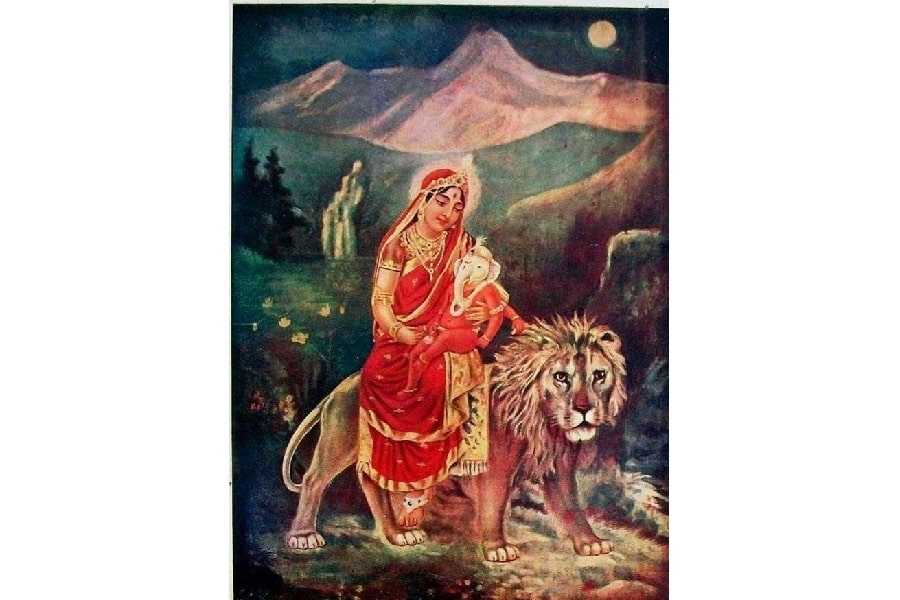
Appearance: Parvati is depicted as a beautiful woman, typically wearing a red sari and often having four arms, unless sat beside her husband Shiva, in which case she often has only two.
Family: Married to Shiva, she is the reincarnation of his first wife, Sati
Sect: Multiple, including seen as part of the Supreme Mother Goddess Shakti, in Shaktism, alongside Lakshmi.
Some Hindus believe that Shiva is only the destroyer without Parvati, for it is she who holds his divine energy and directs it towards creation instead of the destruction that he is capable of.
One of the most famous stories of Parvati can be found in the religious text Skanda Purana, where she assumes the form of a warrior-goddess named Durga and defeats Mahishasura – a demon in the form of a buffalo.
Mahishasura had been bestowed the gift that he could not be killed by any man, and so he rampaged, killing humans and battling the gods. In desperation, the gods joined together to create a goddess so powerful that she could defeat Mahishausura and she was so named Durga, an incarnation of Parvati.
The battle raged for nine days before Durga/Parvati, taking Vishnu’s chakra, successfully beheaded the demon buffalo.
Ganesha: The God of Beginnings

Appearance: Ganesha is often depicted with four arms and the head of an elephant.
Family: The son of Parvati and Shiva
Sect: worshiped across almost all sects of Hinduism
Ganesha (also known as Ganesh) is the son of Parvati and Shiva and is one of the most popularly revered Hindu gods. As such, there are many stories of Ganesha throughout the Bhagavad Gita and other Hindu religious texts. Some contradict others, such as those that tell of his celibacy, compared to those that instead give him two – or sometimes even three – wives: Riddhi, Siddhi, and Buddhi.
But the most famous of all the stories of Ganesha is how he came to have the head of an elephant.
Parvati, Ganesha’s mother, was tired of being interrupted by Shiva, her husband when bathing. And so, determined to finally have peace, she took the scented paste she used to coat her skin and fashioned the figure of a young boy, who she breathed life into.
Beholding her new son, she hugged him before instructing him to guard the door as she bathed and to let no one pass.
But Shiva, upon happening across the boy, demanded he is let through to see his wife. Ganesha, the obedient son, refused him entry, knowing Parvati had requested none should pass. But Shiva was one of the almighty Hindu gods of the Trinity and capable of destroying the Universe and was perplexed and angry to discover a small boy blocking his way.
Unknowing of the boy’s origin, or why he would deny him access to his wife’s chamber, Shiva flew into a rage, taking his sword and decapitating poor Ganesha where he stood.
When Parvati discovered what Shiva had done to her son, she flew into a rage so terrible that she threatened to destroy all of creation. Desperate to appease his goddess, Shiva sent his gana (essentially, members of his tribe) to bring back the head of the first animal they saw.
They soon returned with the head of an elephant, which Shiva placed on the neck of Ganesha’s corpse, merging it seamlessly and breathing life back into the boy.
Shiva then announced that Ganesha was the foremost of all gods and the leader of the Ganapati (the people).
Krishna: The God of Protection, Compassion, Tenderness, and Love
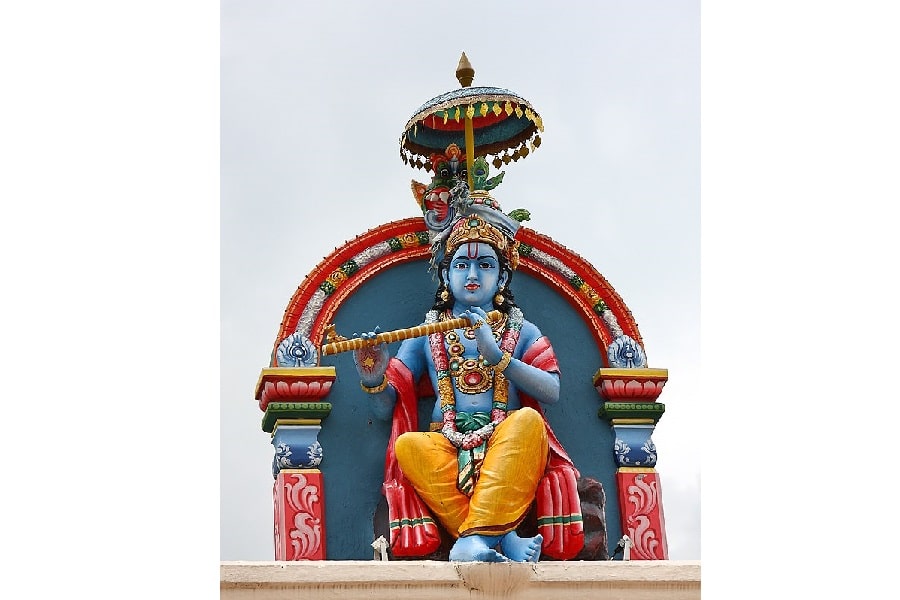
Appearance: Usually depicted with blue-black skin and wearing a peacock feather.
Sect: Worshiped across multiple denominations
Krishna is the eighth incarnation of Vishnu and one of the most celebrated gods in the Hindu faith. There are many stories of Krishna, starting at his birth and continuing throughout his life, told across multiple Hindu texts and Vedic literature, including being a central character in the epic Mahabharata.
Krishna was born in an area and time of chaos in the Hindu world. Upon his birth, his life was immediately in danger from his uncle, King Kansa, and he had to be smuggled to safety. As an adult, he would return and overthrow his evil uncle, killing him in the struggle.
One of the biggest festivals in his honor is Krishna Janmashtami, which falls on the eighth tithi of the dark fortnight (Krishna Paksha) of the Hindu Calendar and celebrates his successful escape from his uncle. The festival usually falls sometime in August or September for those that follow the Gregorian calendar.
Krishna Janmashtami is seen as one of the most important celebrations in Hinduism and over the 48 hours of the festival Hindus will forgo sleep to sing traditional songs, dance, and prepare food that was seen as favored by Krishna.
Hanuman: God of Wisdom, Strength, Courage, Devotion, and Self-Discipline

Appearance: Usually depicted with the body of a man but the face of a monkey, and a long tail.
Family: Son of the wind god, Vayu
Sect: Vaishnavism
Hanuman is best known as the ‘Monkey God’ and the loyal and devoted servant of Lord Rama (one of Vishnu’s incarnations). Where Rama is worshiped, you will inevitably find Hindu temples for Hanuman close by.
Before his devotion to Rama, however, was Hanuman’s fall to earth, and subsequently granted immortality.
When playing as a child, Hanuman saw the sun in the sky and couldn’t help but want to play with it. Using his already great powers, he took an almighty leap towards it but was stopped by Indra (king of gods), who threw a thunderbolt at Hanuman, causing him to fall to Earth wounded.
When Vayu learned what had happened to his son, he was outraged. How dare someone hurt his child?! In response, he went on strike, refusing to let the Earth experience his wind powers. In a desperate bid to appease Vayu, the other gods gave Hanuman a multitude of gifts, including immortality from their creations and strengths beyond that of godly weapons.
As a result, Hanuman grew to be a powerful and immortal warrior and a great asset to Sita and Rama during the story of the Ramayana (discussed in Lakshmi’s entry above).
Indra, King of the Gods: God of the Sky, Rainbow, Lightning, Thunder, Storms, Rain, Rivers, and War
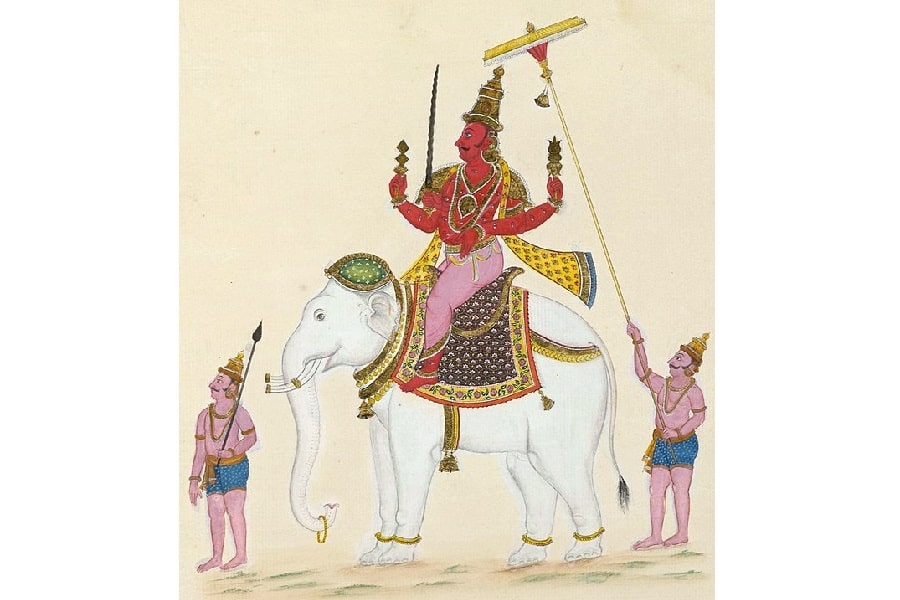
Appearance: Described as having golden or reddish skin, occasionally four arms, and usually sits atop a white elephant
Sect: No longer worshiped
Indra is the most mentioned deity in Rigveda, one of the four Vedas, Hinduism’s most sacred texts. Although he has now been supplanted as King of gods by the trinity of Vishnu, Shiva, and Brahma, and has fallen out of popularity, he is nonetheless still important to the history of Hinduism. And although there are many stories of Indra, one that is widely regarded as the most prominent is his successful defeat of Vritra.
There are multiple accounts of the fight between Indra and Vritra, and depending on the story, the latter can be depicted as a serpent, dragon, or demon. Regardless, Vritra is always the personification of drought, chaos, and evil and is always defeated by Indra.
One of the most popular versions of the story comes from Rigveda. In the story, Vritra was an evil serpent who stole and hoarded all the water in the world, causing mass droughts. Indra, soon after his birth began drinking Soma, a sacred drink that empowered him to face Vritra. His combat began by attacking and destroying Vritra’s 99 fortresses before he made it to the serpent himself.
READ MORE: Who Invented Water? History of the Water Molecule
Once he and Vritra came face to face, a battle ensued that ended when Indra used his vajra (thunderbolt weapon) to strike down and kill Vritra, enabling Indra to return the waters to the world.
READ MORE: Water Gods and Gods of the Sea
Varuna
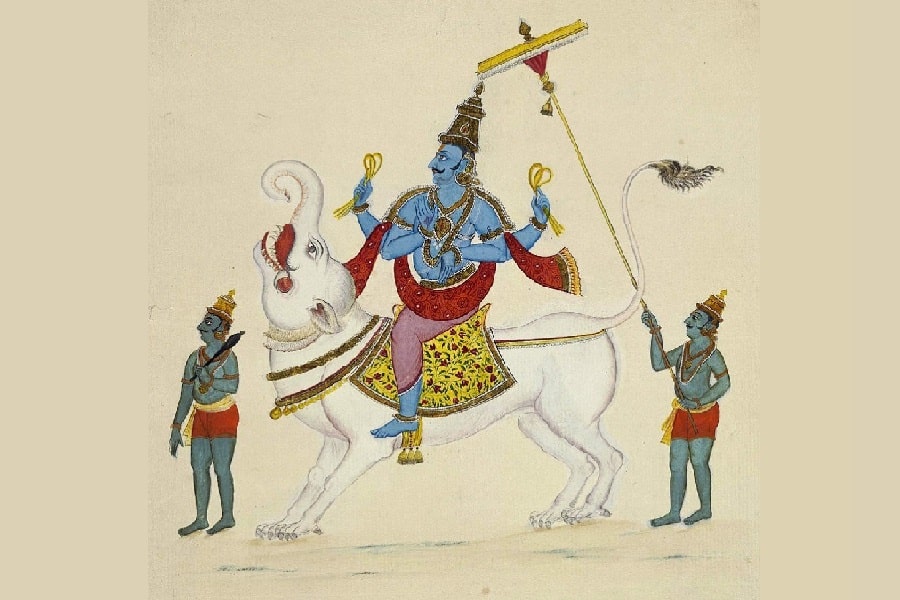
Appearance: He is sometimes depicted riding a sea monster or having a noose (pasha) to control the unruly.
Sect: Varuna is still acknowledged and respected but is not as widely worshiped as in ancient times.
Varuna is a deity found in the Vedic and later Hindu mythology. In the Vedic tradition, Varuna is one of the oldest and most significant deities. He is associated with the sky, water, oceans, and the cosmic order known as “Rita” or “Dharma.” Varuna is often mentioned in the Rigveda, one of the oldest sacred texts of Hinduism.
He is considered a god of great importance, overseeing the cosmic order and maintaining the moral and natural laws (Rita/Dharma). He is sometimes referred to as the “upholder of the order.”
Varuna is often described as the god of the celestial ocean, and he has control over the waters, including rivers, lakes, and the cosmic ocean. He is sometimes depicted riding a sea monster or having a noose (pasha) to control the unruly.
He is also considered a god of justice and is portrayed as omniscient, observing the actions of mortals. He is associated with the concept of “danda” or punishment for those who deviate from the cosmic order. In later Hinduism, the role of the god of justice became more prominently associated with Yama.
The Many Hindu Gods and Goddesses
As a pantheistic religion worshiped by millions around the world, there are countless Hindu gods and deities. However, as many Hindu gods as there are, a few stand out as the most revered by followers of Hinduism around the world.